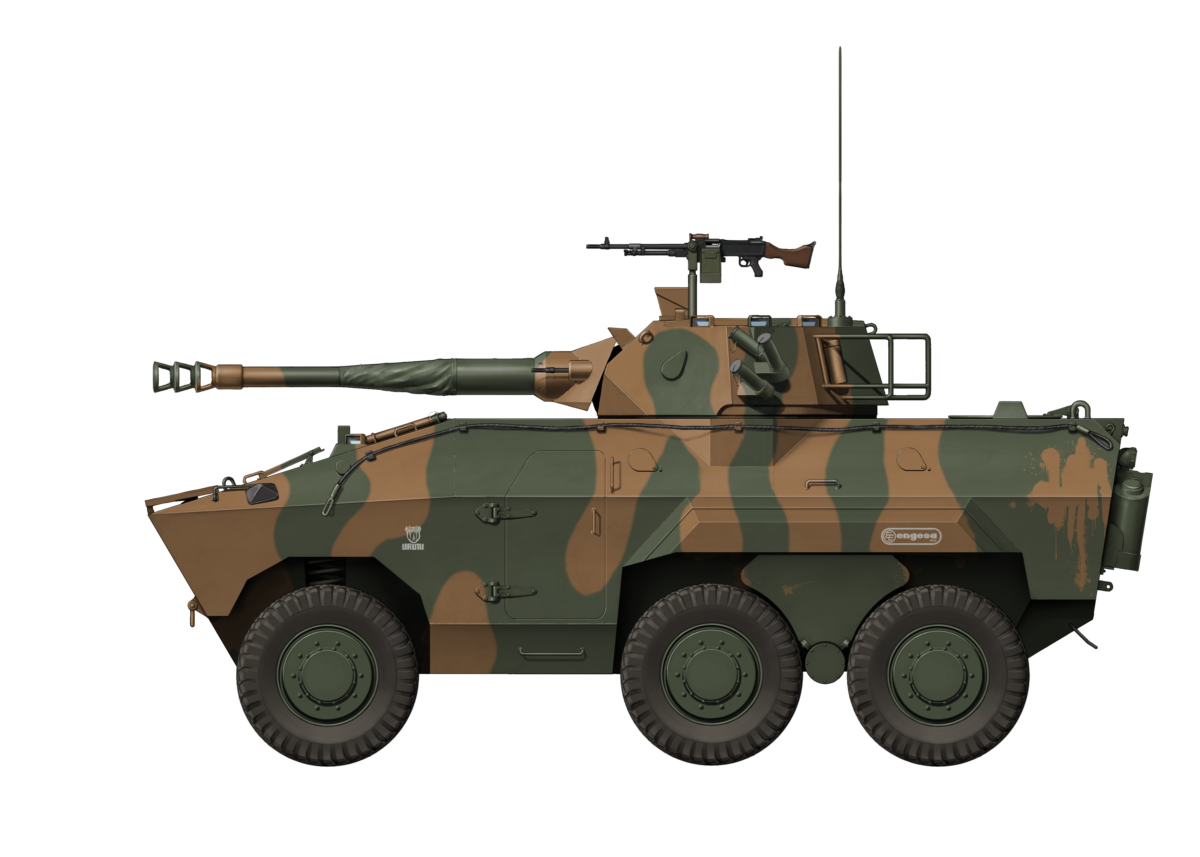
 Federative Republic of Brazil/Tunisia (1980s)
Federative Republic of Brazil/Tunisia (1980s)
6×6 Amphibious Fire Support Vehicle – Around 11-12 Built (Including Prototypes)
When Engesa started manufacturing the Cascavel and Urutu in the early 1970s, the idea of a fire support version of the Urutu Armored Personnel Carrier (APC) armed with a 90 mm turret was conceived. Such a vehicle was already mentioned in early catalogs and so, in the late 1970s, the Urutu AFSV (Armored Fire Support Vehicle) came to life, effectively an Urutu 6×6 APC armed with a modified Cascavel turret.
This unpretentious vehicle would even try, but ultimately fail, to compete to become the Light Armored Vehicle (LAV) for the United States Marine Corps (USMC) through a partnership with Bell Aerospace Textron. The prototypes participated in multiple trials around the world, including India and Malaysia, but it would find its only successful sale with the Tunisian National Guard.

Source: https://www.nairaland.com/1386870/african-militaries-security-services-strictly/1062
The Urutu
The Urutu was Engesa’s troop transport, designed by Engesa and the Brazilian Navy. The vehicle was designed from the ground up to be amphibious, and was approved in 1972 after successful testing in various conditions including open sea, for which it was modified with multiple snorkels, propellers and a wave breaker.
Serial production began in 1973, using the same suspension, engines and transmission as the Cascavel. It managed to achieve large sales in Iraq, Libya and most of South America, but the Urutu would never reach the same success as the Cascavel.
Both the Cascavel and Urutu were upgraded throughout their production runs with different engines, transmissions and brakes, as well as different hull designs. The Urutu was operated by a driver and commander, and could carry 10+2 fully equipped infantrymen.
In addition, it could be equipped with a multitude of different turrets (including Anti-Air). The Urutu AFSVs were made by modifying an existing Urutu hull and mounting a 90 mm armed turret on it. Apart from the turrets, the Urutu could also receive various optional components, like an automatic fire suppression system, amphibious equipment and Nuclear Biological Chemical (NBC) protection, all at the client’s discretion.
Uruvel or Urutu AFSV?
The Urutu AFSV is more commonly known as the Uruvel, combining the designations of the EE-11 Urutu and EE-9 Cascavel into a single word. Although this is practically the most common designation of the Uruvel, no evidence has been found that this designation was in official use with Engesa. Engesa called it the Urutu AFSV in all their brochures and, on the vehicles which were trialed, the Urutu logo with Urutu written underneath is shown. As such, it is very plausible that the Uruvel designations is either an unofficial designation, or was coined at a later point in time.

Source: Expedito Bastos’ Blindados do Brasil Vol II
The Birth of Urutu AFSV Concept
The Urutu AFSV was mentioned in an early Engesa marketing brochure released around 1973-1974. This brochure illustrated the multiple possible armaments and roles their APC could fulfill, with one of these being “a 90 mm for Light Combat Car Duties”. This was around the time when the first Cascavel with 90 mm gun would be produced, but most likely just before one was finished, as only concept art of this Cascavel was shown in the brochure (at the time, the pre-production Cascavels all had 37mm guns). Therefore, it is an accurate estimate that the Urutu AFSV concept was conceived around 1973-1974, although this “light combat car” would not be finished until between 1975-1981.
Another interesting development in the Urutu AFSV concept is found in a brochure estimated to be released around 1974-1975. An Urutu is presented with multiple turrets, of which one is the French H-90 turret armed with a DEFA 90 mm gun. The first 90 mm turrets installed on Cascavels were these French H-90 turrets, but no Urutu is known to have mounted an H-90 turret.
The position of the turret on the vehicle was not accurately represented in these brochures. It is also worth noting is that the Urutu ASFV shown in the brochure has amphibious equipment, such as the tall snorkels and the anti wave blocks at the side of the roof of the troop compartment, indicating that the concept of the Urutu AFSV was already being developed during the Urutu’s initial prototype stages known as the CRTA.

Source: Engesa Brochure
The Urutu AFSV prototype
Engesa would experiment with multiple turrets on the Urutu and Cascavel during their production runs. It is no surprise that the Urutu AFSV received multiple turrets throughout its development. The earliest Urutu AFSV is estimated to have been built between 1975-1981, but the first Fire Support Urutu might date as early as 1973.
A prototype using a British 76 mm Alvis turret and modified boat-like hull was also built. The design and the experimentation with the boat shape suggest that this vehicle might have been built quite early on, but the exact date of the Alvis Urutu is unknown. The boat-like hull was abandoned after no meaningful improvement in sea-borne performance was encountered. The Alvis turret was tested in arctic conditions in Canada, but it wasn’t developed or marketed further. The Alvis Urutu and Urutu AFSV were marketed separately and thus different concepts.

Source: Blindados no Brasil – Expedito Carlos Stephani Bastos
The first Urutu AFSV prototype appeared some time between 1976 and September 1980. It was equipped with an ET-90 I/500 turret in a forward position, near the side doors. This first Urutu AFSV participated in the US Marines Hydracobra competition for a wheeled combat vehicle, but lost to the LAV-25. This particular Urutu AFSV was based on an M2 Urutu which had a manual transmission and was equipped with an ET-90 turret and EC-90 cannon with a 500 mm recoil stroke. In the final evolutions of the Urutu AFSV, the turret would be replaced with a smaller turret and relocated to the middle left. For unclear reasons, the layout was changed, although ex-Engesa employees have pointed out that it most likely had to do with the weight distribution for amphibious operation.
The Urutu AFSV M2 was possibly showcased as a simple proof of concept, while improvements and the new turrets for the low pressure 90 mm and the required 25 mm gun were being prepared for the USMC trials. The hull did not have the final type of headlight internal mounting and seems to have still maintained the original number of firing ports compared to the final version, which only had 6 on either side (4 on the troop compartment, 2 by the side doors).

Source: https://www.facebook.com/1429476790683407/posts/1992991320998615/
The Urutu AFSV M5 and M7
The final Urutu AFSV’s used a 90 mm Engesa-produced EC-90 IV cannon with a 300 mm recoil stroke (less than the Cascavel’s 500 mm recoil stroke) in a modified ET-90 turret called ET-90/300. This turret did not have a bustle where for example 6 rounds of ammunition were stowed in the original turret. Documents do mention that the original 500 mm recoil gun and turret could still be installed if the customer desired.
Unlike the early Urutu AFSV, the turret was positioned center-left in the hull, leaving space between the side doors and turret basket. Engesa policy left much of the vehicle characteristics and equipment to the client’s discretion.
Two versions of the Urutu AFSV were made in this new configuration. One was based on the M5 Urutu hull, and the other on the M7 hull. The M5 Urutu AFSV had a center-left mounted ET-90/300 turret and used an OM-352A engine alongside an AT-545 automatic Allison transmission. The M5 Urutu AFSV is known to have been built at some point before December 1981, but it is unknown if the M5 Urutu AFSV was built in time for the LAV competition in the United States, as the Urutu/Hydracobra was already rejected on September 11th 1981.

Source:
The M7 Urutu AFSV used the most modern Urutu AFSV hull Engesa produced. It had the same layout as the M5 and was powered by a more powerful Detroit Diesel DDA 6V53 engine and an automatic MT-643 Allison transmission. But, more importantly, and what sets the M7 hull apart from the other Urutus was the usage of planetary gear wheel hubs. The planetary gears provided better torque transfer, efficiency and lower backlash/inertia from the suspension on other components. This was advantageous as the planetary gear would reduce the wear and tear on the automotive components, giving the vehicle a higher durability and life. Although the price and complexity of the Urutu would increase, the extra durability and performance would most likely make up for the extra costs.

Source:
The Urutu AFSV in Detail
Overall dimensions were the same as the normal Urutu, with the exception of the height and weight, due to the turret. It was 6.15 m long, 2.59 m wide, and 2.6 m tall, which was about 0.4 m taller than the original Urutu. The weight was 14 tonnes, around 2 tonnes more than the original Urutu. This could change even further depending on the engine used.
It was operated by a crew of three (commander, driver and gunner) plus an additional four soldiers in the back, with enough space for an additional two soldiers seated by the side doors, although these are not counted in some brochures.
Hull
The Urutu AFSV hull was the same as the Urutu’s with no major difference whatsoever except the turret ring, although the choice of engine, transmissions and modifications, such as automatic fire extinguishers, were up to the client’s discretion.

Source: https://www.nairaland.com/1386870/african-militaries-security-services-strictly/1062
The Urutu AFSV was armored with 12 mm thick armor at the front and 6 mm on the sides and rear. It used Bimetal steel which offered an improved protection to weight ratio compared to standard steel. The Bimetal armor offered around 1.8 times the effective thickness of an equivalent homogeneous plate against 7.62 mm ammunition, meaning the Urutu AFSV had an effective homogeneous thickness of 21.6 mm at the front and 10.8 mm at the sides and rear against 7.62 mm fire.
The hull was welded and angled at the front and with a minor angle at the sides and rear. The rear angle varied depending on the model, with earlier models having a triangular shape, while the later models had a flat rear. The rear door was operated by the driver or manually by the passengers. All Urutus have two side doors.
The driver was positioned in the front left of the vehicle, next to the engine. The engine was located in a separate compartment. In a brochure of the Urutu, a picture is presented which suggests that there is space for two additional soldiers behind the driver and engine, next to the side doors, although these positions are not mentioned in any other documentation. The turret is positioned on the left middle and, directly behind the turret, are ammunition stowage racks. The 4 soldiers were located in the rear of the vehicle.

Source: Engesa brochure
The placement of the frontal headlights also varied with the hull version. Early versions had external headlights mounted on the upper front plate, while later versions had hull integrated headlights. Attachment hooks for towing cables were present in the front, sirens could be attached to the front sides of the hull, a stowage point for a towing cable was present in the left side of the vehicle, while, on some versions, the right side was occupied by the exhaust pipe. The Urutu AFSV was fully amphibious, although amphibious equipment such as propellers, rudders and snorkels were optional. A swimming vane operated by the driver was fixed to the top of the frontal hull plate.
It could carry four infantrymen in the back plus another two by the side doors and also featured a bilge pump and a manual backup pump for amphibious operations. The Urutu AFSV also had a single circular hatch on top of the back compartment, alongside a number of firing ports for the soldiers in the back, which varied depending on the hull model. The hull could carry 36 rounds of 90 mm ammunition, although it is unknown if this was standard for every Urutu AFSV model.

Source: Tecnologia Militar Brasileira
The driver had a steering wheel to steer the vehicle and, depending on the version, would have a brake and gas pedal to the right side of the steering wheel. The gear shift for the automatic transmission was located on his right side and the instrument panel was located on his left side. The driver had 3 periscopes at his disposal, which could be upgraded to day/night periscopes.

Source: Adriano Santiago Garcia
Mobility
The Urutu AFSV was offered with 3 main engines in combination with various transmissions, although more options were possible depending on the client’s wishes.
| Engine | Fuel | Horsepower | Torque |
|---|---|---|---|
| Mercedes OM352 | Diesel | 125 at 2,800 rpm | 353 Nm at 1,600 rpm (260 ft-lb) |
| Mercedes OM352A (turbocharged) | Diesel | 190 at 2,800 rpm | 431 Nm at 1,800 rpm (318 ft-lb) |
| Detroit DDA 6V53 | Diesel | 210 at 2,800 rpm | 598 Nm at 1,800 rpm (441 ft/lb) |
The engines were paired with a range of transmissions depending on the Urutu AFSV model. It could have a manual Clark transmission of the Urutu AFSV M2 with 5 forward and 1 reverse gears, an Allison AT-545 automatic transmission of the Urutu AFSV M5 with 4 forward and 1 reverse gears, or an Allison MT-643 automatic transmission of the Urutu AFSV M7 with 4 forward and 1 in reverse gears. Only the MT-643 could be paired with the Detroit engine. In addition, the Urutu AFSV used an Engesa 2 speed transfer case, which allowed the vehicle to be used in reduced and high gear. By putting the Urutu AFSV in reduced gear, it sacrificed horsepower for torque, making it more effective at climbing slopes. The vehicle also offered a power take off function for the propellers through the transfer case.

Source: Blindados no Brasil – Expedito Carlos Stephani Bastos
The Urutu AFSV had a maximum road speed of around 95 km/h and a maximum amphibious speed was around 8 km/h. The floatability of the Urutu AFSV was good enough to enable the vehicle to fire its main gun without sinking due to the imbalance the recoil would create, but the Urutu AFSV was not fit for open sea service. The Urutu AFSV also had a remote tire pressure control system to allow pressure regulation of the tyres from within the vehicle.
Its gradeability was around 60%, with the maximum side slope being 30%. The Urutu AFSV had a ground clearance of 0.375 m and could cross a 0.6 m high vertical obstacle. It had an operational range of 850 km. It could also be airlifted, much like all other versions of the Urutu.

Source: Engesa Brochure
The vehicle was 6 x 6 driven, of which the rear 4 wheels were part of the boomerang suspension. The boomerang suspension, in combination with the Engesa 2 speed transfer case, would enable the Urutu to cross challenging terrain and provide maximum traction in most situations. The power of the engine was distributed to a differential on the front side of the vehicle, and a differential in the rear. The rear differential drove the boomerang suspension with a single axle, which made the boomerang suspension such an ingenious design.
Turret
The turrets can be divided into multiple designations. The main designation refers to the recoil stroke of the gun. A turret with a standard recoil gun, as on the Cascavel for example, was designated as ET-90/500, with the 500 referring to 500 mm recoil stroke. The alternative turret was denominated as ET-90/300 with a 300 mm recoil stroke. Other designations refer to the type of turret used. These are ET-90 I and ET-90 II, which are both turrets designed by Engesa and armed with the EC-90 gun. When one of these turrets is referred to with 300, it means that it is a smaller turret instead of the original Cascavel turret.
The Urutu AFSV had the same turret ring diameter (1,600 mm) as the Cascavel, so the vehicles had interchangeable weapon systems. The first turret installed on a Urutu AFSV prototype was a Cascavel’s ET-90/500 turret mounted in a forward left position equipped with a EC-90 III cannon. Even with this ample weight away from the center of mass the vehicle was fully amphibious, although further details on its sea-borne performance are unavailable.
ET-90 I/500
The ET-90/500 was designed and produced by Engesa in 1975 to replace the French H-90 turrets, so the Cascavels could achieve a higher rate of domestic production. It was made from scratch to be armed with the EC-90 gun, Engesa’s licence produced Cockerill 90 mm low pressure cannon. It had a commander on the left and a gunner on the right side of the turret, and both had 4 periscopes.

Source: Engesa Manual
In some aspects, the turret resembles a H-90 turret, with both sharing the same ring diameter, armament, and layout in some points. The ET-90/500 weighed 2,400 kg and had 16 mm of Bimetal steel armor all-round and 8 mm on-top. It could carry 24 rounds of 90 mm ammunition and had a French F-1 co-axial machine gun. The cannon was fired through a pedal that ignited an electric mechanism in the breech that in turn ignited the primer in the casing. The turret had a handle for elevation and horizontal transverse, with the former also having a trigger for the coaxial machine gun. This turret was used in the Urutu AFSV prototypes but was superseded by the ET-90 2/500 and the ET-90/300.

Source: Engesa Manual

Source: Engesa Manual
ET-90 II/500
The ET-90 II/500 was first installed on Cascavel M4, becoming standard for all later Cascavels. It shared most characteristics with the earlier ET-90 I, with a few exceptions.
The turret ventilator was relocated to the back of the turret roof, while in the early ET-90, it was mounted in the bustle. The turret height was increased to provide more room and depression for the gun. The turret basket was also redesigned with a slight size increase. Not only was it more comfortable and ergonomic, but the new turret was also capable of receiving modifications such as laser-rangefinders, NVG devices, and drive-motors for traversing the turret. The armor value was the same as the early ET-90, 16 mm all around and 8 mm on-top.

Source: Engesa Manual
In addition to the overall size increase of the ET-90 II/500 turret, the turret also mounted the Brazilian M971 MAG (FN-MAG licensed copy) as the coaxial machine gun. The gunner’s hatch now opened to the front, being located on the right side of the turret. The bustle rack in the early ET-90 had a double configuration where half of the ammunition was in a revolver-like drum and the rest in rectangular cells. In the ET-90 II, all of the ammunition was stowed in rectangular cells. The ammunition load for both the machine gun and the 90 mm cannon remained the same. It also mounted an improved EC-90 III gun.

Source: Engesa Manual
The new turret could also be equipped with a sub-turret for the commander, designated the ET-7,62. The ET-7,62 sub-turret was installed on top of the commander’s hatch to the left of the turret. It had 8 mm all around armor and a universal mount for machine guns or grenade launchers. The machine gun could be fired from within the turret through an electric system using solenoids. The sub-turret could also be equipped with NVG devices and had a dedicated sight for aiming the machine gun remotely.

Source: Engesa Manual
ET-90/300
Not much info is available on the ET-90/300 development history, with evidence pointing that two versions of this turret existed, much like its large predecessors from which it was derived. In some images, the gunner’s hatch opens forward, while in others it opens backwards. The ET-90/300 is basically an ET-90/500 without the bustle, eliminating the bustle ammunition rack, which reduced its ammunition capacity from 24 to 12 rounds. The removal of the bustle caused the rearrangement of the ventilator location. The turret weight was reduced to 1,800 kg while maintaining the same performance characteristics as the original ET-90. The elimination of the turret bustle also called for a new gun with a smaller recoil stroke, which was designated EC-90 IV (300 mm recoil, 200 mm less than the original EC-90).

Source: Brazilian Army
Both versions of the ET-90/300 turret were equipped with 6 smoke launchers on either side of the turret. It had a commander on the left and a gunner on the right side of the turret. The commander’s hatch could mount the ET-7,62 machine gun sub-turret. Both turrets had manual transverse with the option of installing a motor for automatic transverse at the client’s discretion. The turrets had 8 periscopes (4 per crewmen) and a 6x magnification sight for the gunner. The M5 and M7 versions of the Urutu AFSV were equipped with the lighter ET-90/300 turret mounted on a center-left position.
Firepower
The Urutu AFSV was armed with a 90 mm EC-90 IV cannon (36 calibers in length) and had a recoil stroke of 300 mm. As secondary armament, the Urutu AFSV had a Coaxial 7.62×51 M971 (FN MAG) machine gun and a roof-mounted .50 or a 7.62 machine gun mounted on the turret or attached to a ET-7,62 sub-turret. It carried six 76 mm smoke launchers, three on each side of the turret, and stored 12 additional smoke grenades in the turret. The Urutu AFSV carried 12 rounds in the turret, stored in revolver-like drums attached to the floor, plus another 36 rounds in the hull.
| Round | Capability | Effective range | Velocity |
|---|---|---|---|
| HEAT (High Explosive Anti Tank) | 130 mm (5.1 inch) at 60º from vertical or atleast 250 mm (13.8 inch) flat at any range. | 2,000 meters (2,185 yards) | 900 m/s |
| HESH (High Explosive Squash Head) | Meant for bunkers, walls, and light vehicles. | 2,000 meters (2,185 yards) | 800 m/s |
| HE (High Explosive) | Lethal radius of 15 meters (16 yards) | 2,000 meters (2,185 yards) | 700 m/s |
| HEAT-TP (High Explosive Anti Tank – Training Projectile) | Training projectile | 2,000 meters (2,185 yards) | 900 m/s |
| White Phosphorus – Smoke | Smoke round | 2,000 meters (2,185 yards) | 690 m/s |
The Urutu AFSV’s firepower was the same as the Cascavel, allowing for the same upgrades, such as laser rangefinders and stabilizers. The Urutu AFSV could be fitted with day/night sights and an electric turret drive as well. The vehicle had a gun elevation of up to 30º and a gun depression of -8º.

Source: Engesa Manual
Export Attempts
The first Urutu AFSV prototype participated as a candidate in the trials for the USMC as Bell’s Hydracobra, where it did not pass the initial selection process. Another Urutu AFSV prototype with an Alvis turret and 76 mm gun was tested in the frigid Canadian weather. It seems that the Urutu AFSV and the Hydracobra family were also marketed to Canada, considering the advertisement of the Hydracobra was translated to French.
The United States
Interestingly, the United States would show interest in the Urutu, and indirectly in the Urutu AFSV on two separate occasions. The first was with Bell Aerospace trying to sell the Urutu under the Hydracobra name to the USMC and the Rapid Deployment Force, and later Food Machinery Corporation (FMC) for the same style of Rapid Deployment Forces, special forces, or strategical garrisons.
The Hydracobra
The prototype of the Urutu AFSV appeared as part of a license deal of the Urutu family between Engesa and Bell Aerospace, renaming the Urutu to Hydracobra for the USMC LAV competition in 1980. A version equipped with an ET-90 turret in a forward position, near the side doors, was trialed. The Urutu AFSV fulfilled all of the competition requirements and was submitted. Fortune did not smile at the Hydracobra though, as it did not pass through to the subsequent phases of the competition and was rejected.

Source: https://www.forte.jor.br/2017/05/24/blindado-urutu-da-engesa-quase-foi-produzido-nos-eua/
The trials demanded a light AFV which could serve for a wide range of roles with full NBC protection, carrying capacity for at least 4 soldiers, amphibious capabilities, light enough to be transported by an CH53 helicopter with a maximum weight of 14 US tons (12.7 tonnes), and had to have the following armaments as an option: 25 mm, 75-105 mm or high velocity gun, Anti-Tank Guided Missile, and mortar. The Urutu would be sold as the Hydracobra through Bell Aerospace. Bell Aerospace would improve the Urutu to United States standards and would subsequently license produce them at Bell’s Wheatfield plant.

Source: Aerospace Technologies of Bell Aircraft Company : a Pictorial History (1935-1985)
FMC
FMC would also attempt to sell the Urutu, and indirectly the Urutu AFSV, around 1985-1986 to the United States. The vehicle was again marketed for some form of Rapid Deployment Force, but also for special forces, such as Delta Force. It was also stated that the vehicles were considered to be sold to the USMC and Army units of the American Armed Forces. The Urutu was trialed in Fort Lewis by the US Army and FMC. After three months of testing in late 1986, FMC would then consider the acquisition of licenses to produce an estimated 200 vehicles, with potentially another 600 for the USMC and the Ranger units of the Army.
Although some sources suggest that the license deals were signed, it seems that the deal and the production for the US Army never actually went through. It already was a very intriguing move by FMC in the first place to try to sell the Urutu again to the United States. The US was already operating the LAV, which could also have been sold to these units as well. It would not be surprising if the United States just wanted to test out the Urutu again to see what it could and could not do, and to maybe sell the Urutu to bind smaller nations to them. In the end, the trials and the license deal never resulted in any physical production by FMC.
Malaysian Trials
The Malaysian Army sought a new armoured vehicle to replace its aging Panhard M3 and V-100 fleet. The SIBMAS, Urutu AFSV and Condor would attempt to obtain the contract. The process towards and the trials themselves would have a number of somewhat questionable occurrences like having no set requirements and eventually set up requirements in the SIBMAS’ favor.
The M5 Urutu AFSV was trialed in Malaysia in 1981, where it performed seaborne firing, (something the engineers thought impossible) and armor tests against small caliber munitions, which it passed without a single penetration.
The Urutu AFSV did not manage to secure a contract in Malaysia which went to the SIBMAS and Condor instead. The decision was met with opposition over the process of the trials, but after a review, the SIBMAS and Condor were still ordered.

Source:
Tunisian Service
Tunisia is the only country to operate Urutu AFSVs. but nothing is known about the trials. They received 9 vehicles in 1982 and are used by the Tunisian National Guard for internal security purposes. The Urutu AFSVs in Tunisian service are M5 Urutus equipped with OM-352A engines. These vehicles are used to guard important government buildings in major cities during times of unrest. They were used during the Arab Spring to protect parts of Carthage as passive onlookers.
Thanks to the price tag and the practical characteristics of the vehicle, internal security seems to be its niche. Being capable of intimidating crowds and carrying small numbers of troops around urban environments, as well as dealing with heavy opposition if need be, the Urutu AFSV seems like a perfect vehicle for Gerdameries and rear line security, something similar to the VBC-90s used by the French Mobile Gerdameries.

Source: https://www.nairaland.com/1386870/african-militaries-security-services-strictly/1062
Indian Trials
In 1985, an M7 Urutu AFSV, equipped with planetary gears in the wheels, was tested in India in harsh winter conditions at a high altitude, going as far as swimming in lake Tso Moriri. Its performance was optimal in all weathers and attitudes, although no contracts came out of these trials. It is unknown if any other vehicles were tested and what the Indian Army exactly had in mind for the EE-11 AFSV. The trials remain a bit of a mystery.

Source: Blindados no Brasil – Expedito Carlos Stephani Bastos
The EE-9 and the EE-11 Versus the Urutu AFSV
The Cascavel and Urutu were designed as ‘sister’ vehicles in the same span of time. The Cascavel was finished before the Urutu and reached more success than the Urutu thanks to its simplicity and tactical value, even though the Urutu was initially thought by Engesa as their most promising product.
The Urutu AFSV was Engesa’s attempt at combining both vehicles, but the compromise seems to have been too much to make it an interesting vehicle. To make a comparison, 3 Urutu AFSVs with Detroit engines were priced at 1.038 million US Dollars in 1988. This meant 3 EC-90 guns and transporting 12 troops to the battlefield. If a nation would instead buy three Cascavels and an Urutu instead, it would have to pay 1.020 million US Dollars for 3 EE-9 Cascavels and 1 EE-11 Urutu, of which the Urutu could transport 11 troops. So for less money, a country could obtain purpose-built equipment or it would spend more for a hybrid vehicle.
This difference in price and the capabilities that purpose-built vehicles bring to the table suggests that the Cascavel-Urutu combination was much more interesting for Armies, as demonstrated by Bolivia, Colombia, or Gabon, while the Urutu AFSV was much more interesting for specialized forces or national guards, like in Tunisia. The overall role the Urutu AFSV seems to market towards is simply much more limited than what the Cascavel and Urutu could deliver for an Army. This is the main reason why it is thought that only Tunisia acquired the Urutu AFSV.
Fate of the Prototypes
It is unknown what happened to most of the prototypes of the EE-11 Urutu AFSV. The M2 Urutu AFSV has most likely either been scrapped or repurposed by Engesa for a different configuration. The Urutu AFSV M5 has either been scrapped, reconfigured, or sold as part of the 9 Urutu AFSV M5’s to Tunisia. The Urutu AFSV M7 returned to Engesa after the India trials, where it remained until Engesa went bankrupt in 1983. After Engesa’s bankruptcy, the Urutu AFSV was passed on to Universal Ltda, a company specialized in overhauling and maintaining Engesa equipment, where it was disassembled in 2001.
Conclusion
The Urutu AFSV is the fire support version of the Urutu APC, armed with a low pressure 90 mm cannon, effectively combining both the Urutu and Cascavel into a single platform. Initially, the Urutu AFSV used a slightly modified ET-90 turret (the same as the Cascavel), but an improved weight balance most likely drove for a redesign with a smaller and repositioned turret of the eventual Urutu AFSV in use today.
It seems that the hybrid nature of the Urutu AFSV also became its undoing. The costs to operate hybrid vehicles compared to purpose-built vehicles simply did not add up for Land Forces to pick the Urutu AFSV over a Cascavel-Urutu combination in conventional units. The Urutu AFSV effectively became more of a niche vehicle, serving in National Guard units instead. The Urutu AFSV was trialed around the world in an attempt to sell it, and although widely marketed, it only managed to secure a single 9 vehicle contract with Tunisia to serve in the Tunisian National Guard. In the end, the Urutu AFSV remains as an interesting concept, attempting to combine the features that made the Cascavel and Urutu great, but ultimately too much of a compromise to be interesting or viable for standard army units.
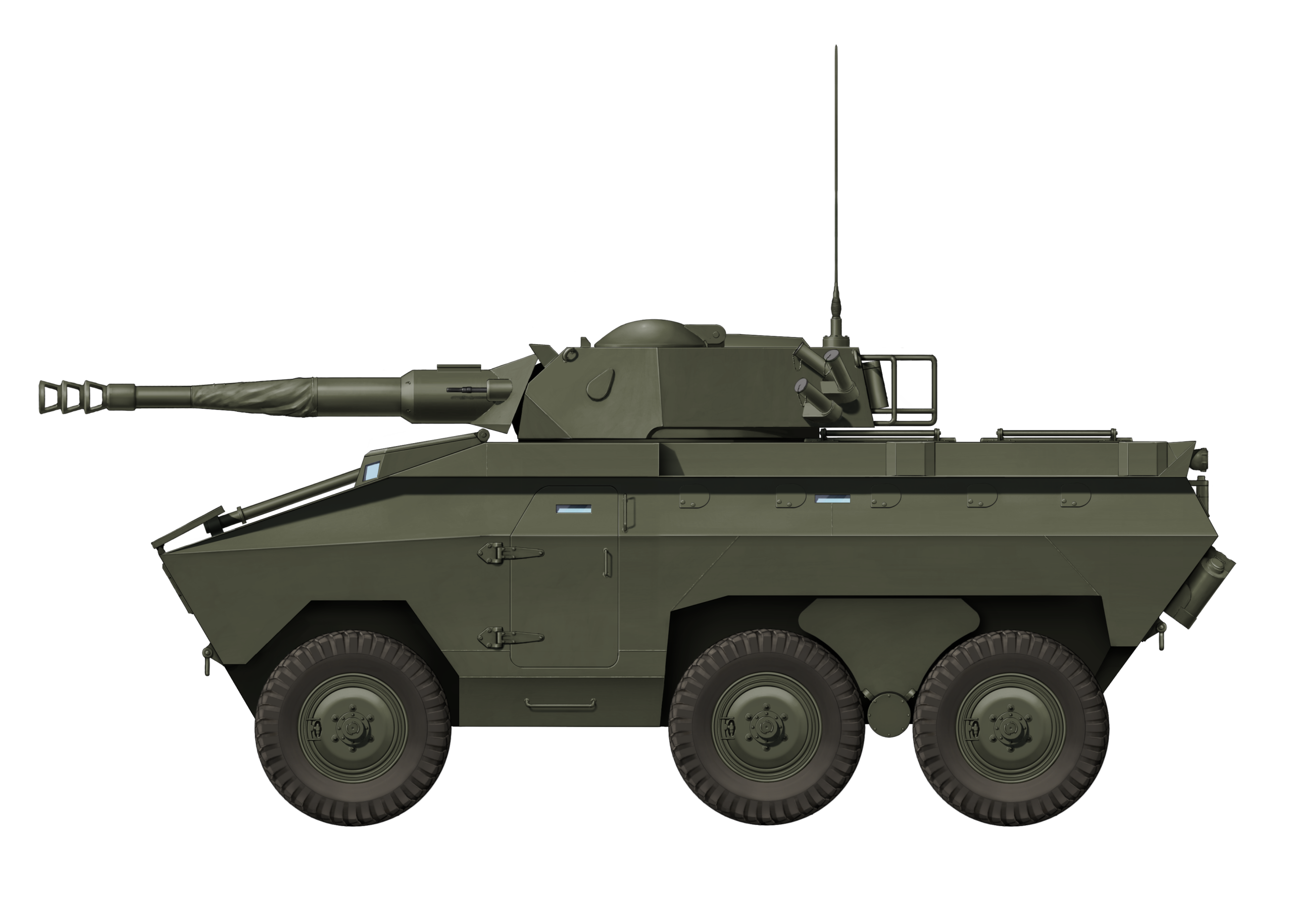
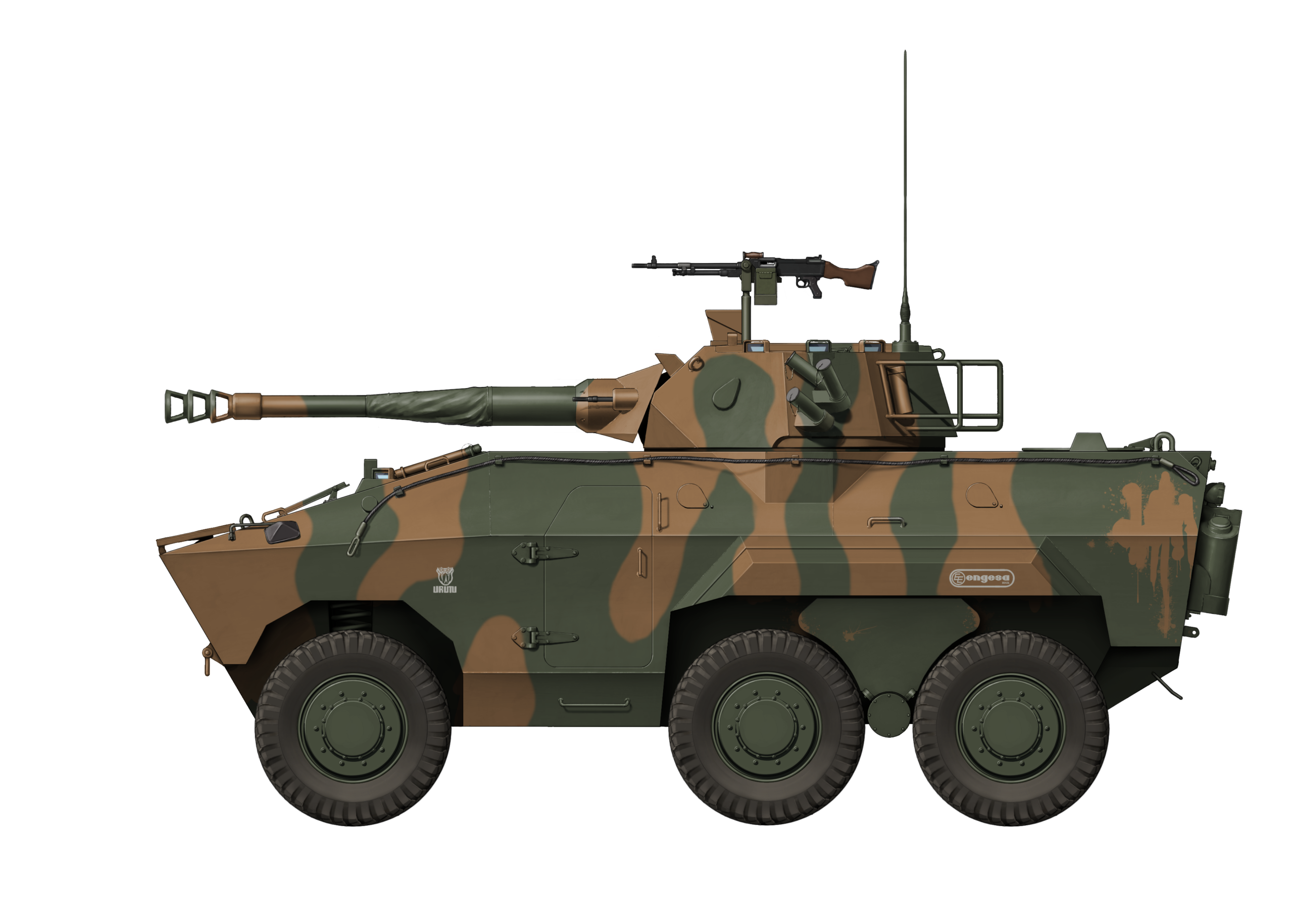
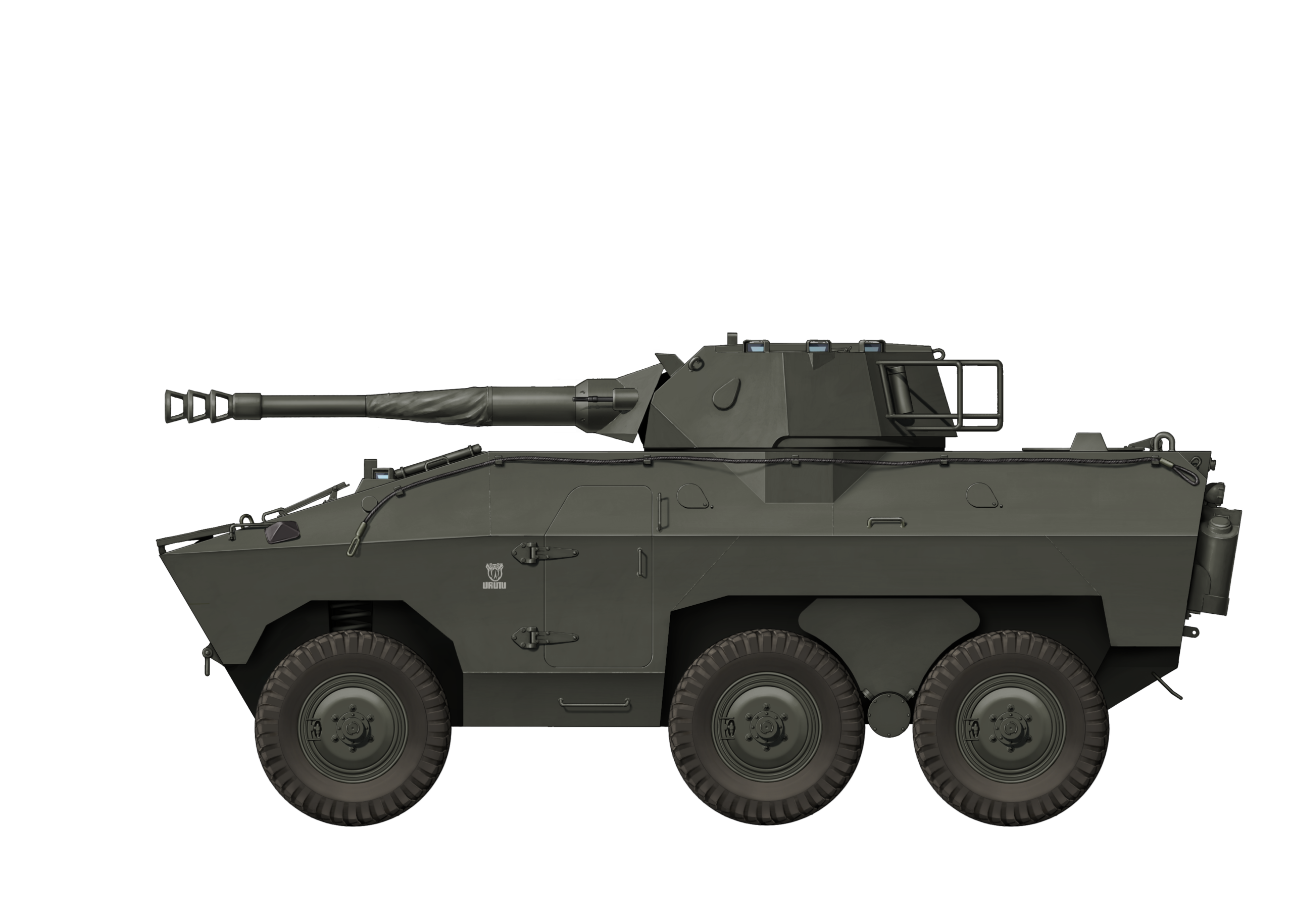
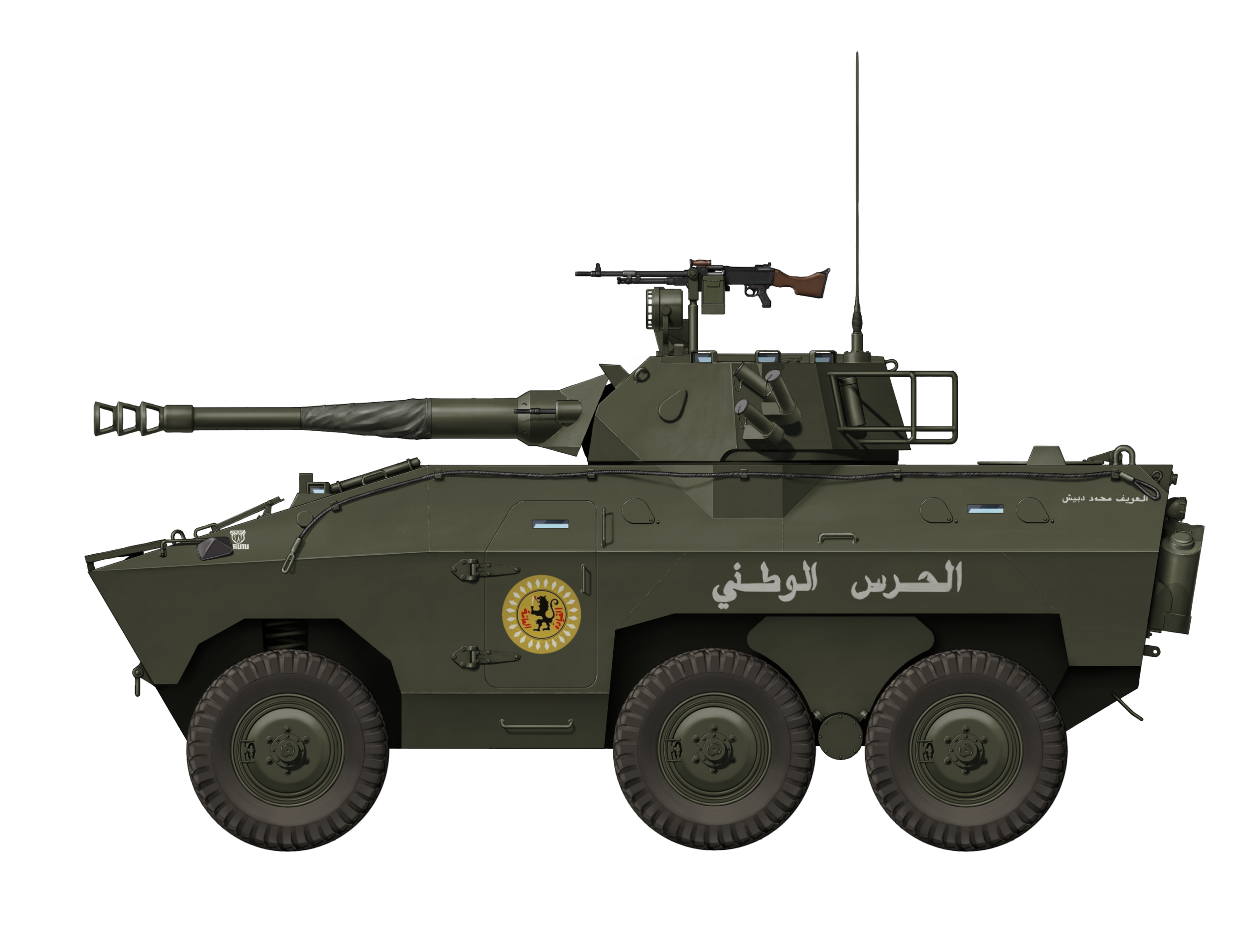
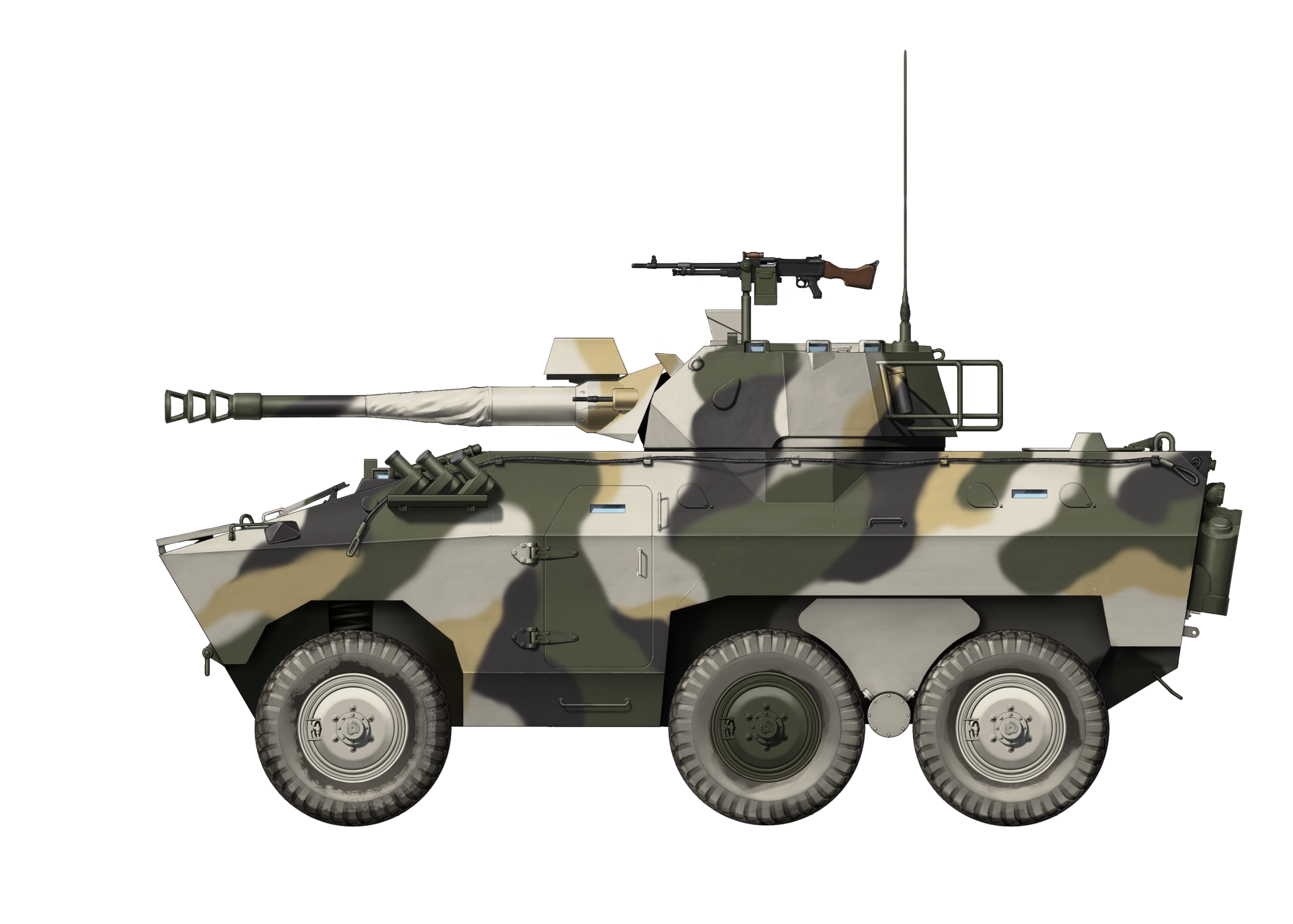
Specifications EE-11 Urutu AFSV |
|
|---|---|
| Dimensions (L-W-H) | 6.15 (20’) , 2.59 (8’) , 2.6 m (8’) |
| Total weight | 14 tonnes (15.43 US tons) |
| Crew | 3 + 4 (possibly 6 extra personnel depending on internal configuration) |
| Propulsion | OM352, OM352A Mercedes Benz engine or Detroit Diesel DDA 6V53 |
| Suspension | Boomerang Suspension |
| Speed (road) | Around 95 km/h (59 mph) |
| Operational range | 850 km (528 Miles) |
| Armament | 90 mm EC-90 low pressure cannon |
| Armor | Hull Front 12 mm (0.5 inch, Bimetal) at 70º Front (Lower Glacis) 12 mm (0.5 inch, Bimetal) at 30º Sides 8 mm (0.3 inch, Bimetal) Rear 8 mm (0.3 inch, Bimetal) at 10º Turret 16 mm (0.63 inch, Bimetal) allround 8 mm (0.3 inch, Bimetal) top |
| Produced | 11-12 (Including Prototypes) |
Sources
Blindados no Brasil – Expedito Carlos Stephani Bastos
Engesa EE-9 Cascavel 40 anos de combates 1977-2017
Engesa’s Marketing Brochures
Engesa’s User and technical manuals for the Urutu and Cascavel
Research and development Title 2 – Hearings on Military Posture and H.R. 5968
LAV-25 – The Marine Corps’ Light Armored Vehicle – James D’Angina
Concept Definition and Evaluation Criteria for the Mobile Protected Weapons System and the Light Armored Vehicle – Terry A. Bresnick, Charles P. Annis, Dennis M. Buede
Kwajalein Hourglass Volume 18
Personal correspondence with Ex-Engesa employees
Engesa pretende atrair compradores para o Urutu, o Cascavel e o Jararaca – 15-3-1981
Brasil deve receber US$ 1,5 bi dos EUA por venda de tecnologia bélica – 17-4-1986
Exército norte-american poderá comprar carro blindado de Engesa – 14-11-1986

